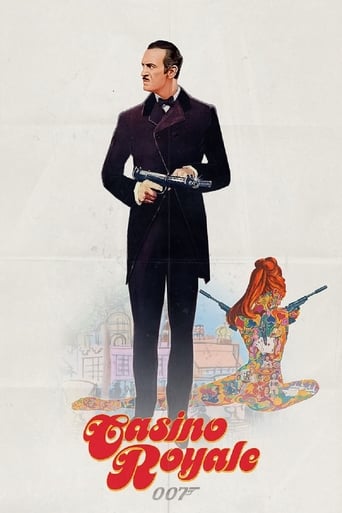¡Casino Royale es demasiado para un James Bond!
"Casino Royale" (1967), a kaleidoscopic and eccentric adaptation of Ian Fleming's novel, was produced by Famous Artists Productions and distributed by Columbia Pictures in the United Kingdom. Directed by five different directors, including John Huston and Val Guest, the film diverges wildly from the source material, transforming it into a surreal, comedic romp. Starring an ensemble cast that includes David Niven, Peter Sellers, and Ursula Andress, the movie eschews a coherent narrative in favor of a series of loosely connected vignettes, each more bizarre than the last. This unconventional approach to the spy genre, released at the height of the James Bond craze, resulted in a film that is both a product of its time and a unique anomaly within the franchise. The plot, if it can be called that, revolves around Sir James Bond (David Niven) being coaxed out of retirement to deal with the threat of SMERSH, a Soviet counterintelligence agency. Bond's solution is to rename all agents "James Bond 007" to confuse the enemy, leading to a series of chaotic and often hilarious misadventures. The film's fragmented structure allows for a parade of guest stars and cameos, including Woody Allen as Bond's nephew, Jimmy Bond, and Orson Welles as the villainous Le Chiffre. The result is a film that feels more like a series of sketches than a traditional narrative, yet it is this very disjointedness that gives "Casino Royale" its charm and enduring cult status. Visually, "Casino Royale" is a feast for the eyes, with lavish sets and costumes that reflect the swinging '60s aesthetic. The film's production design, overseen by Michael Stringer, is a riot of color and creativity, from the opulent casino scenes to the psychedelic sequences that seem to have been inspired by contemporary art movements. The soundtrack, featuring contributions from Burt Bacharach, adds another layer of sophistication and whimsy, with the iconic song "The Look of Love" becoming a classic in its own right. These elements combine to create a sensory experience that is as much about the era as it is about the story. Despite its initial mixed reception and commercial underperformance, "Casino Royale" has grown in stature over the years, appreciated for its audacious departure from the Bond formula and its embrace of the absurd. It stands as a testament to the creative freedom of the 1960s, a time when filmmakers were willing to take risks and push boundaries. Today, the film is celebrated for its unique place in cinema history, a bold and colorful experiment that continues to entertain and bewilder audiences with its sheer audacity.
Año1967
Presupuesto12000000$
Duración131 minuto
Ingresos41744718$
GénerosAventuraAcciónComedia
Países de producciónUnited Kingdom

